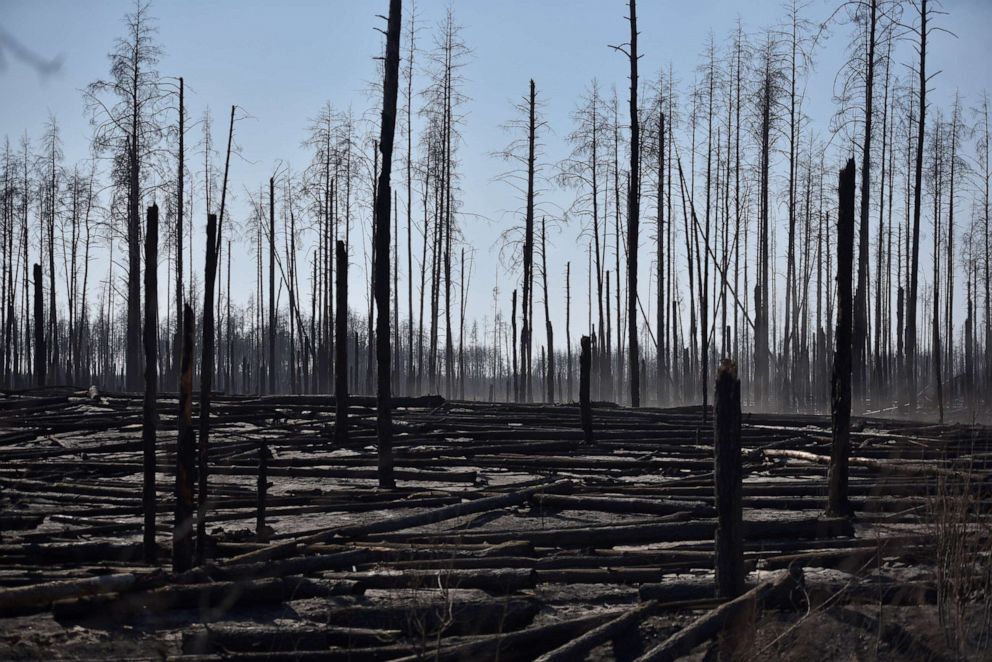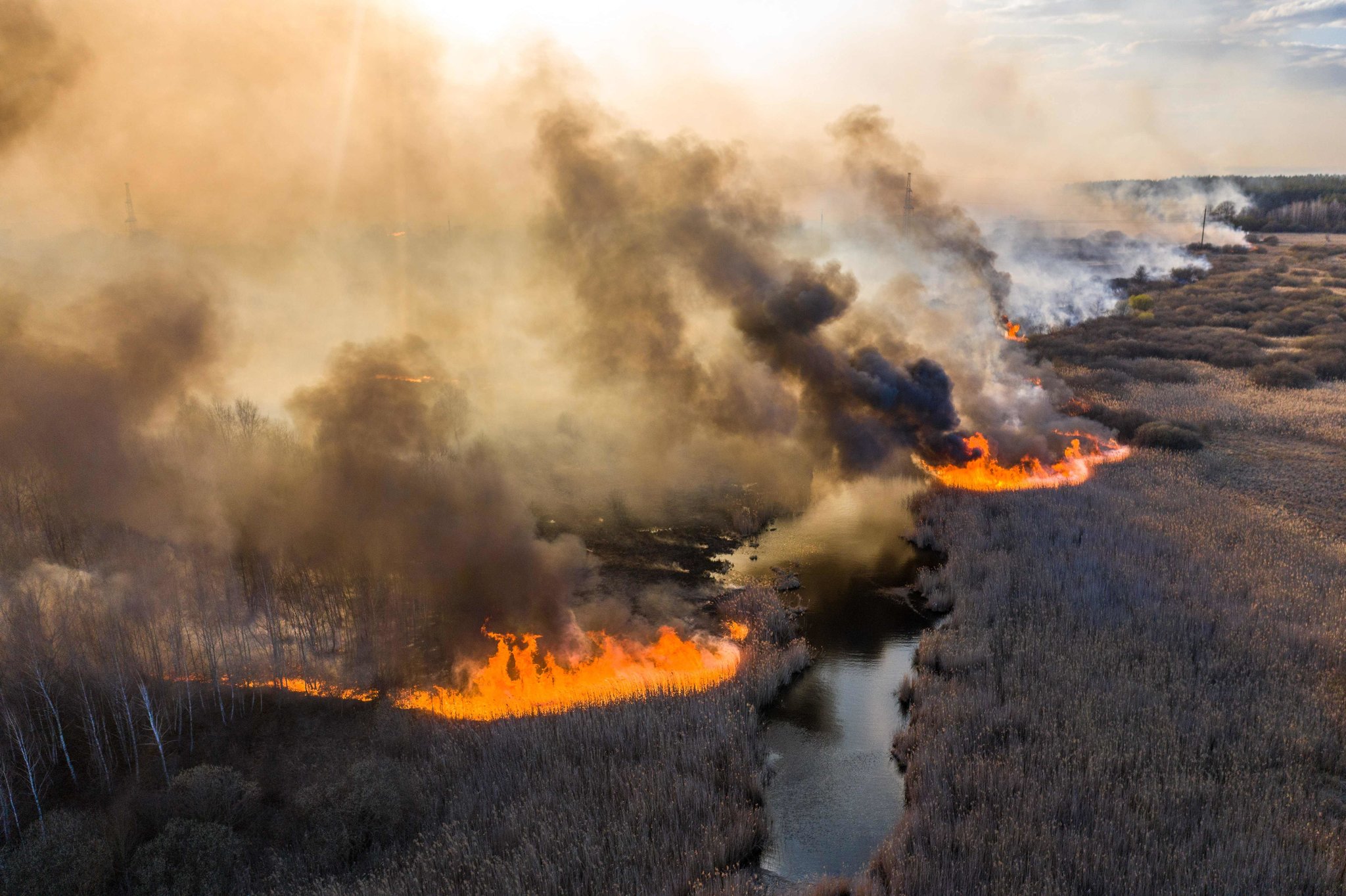The Chernobyl nuclear site has made headlines again and raised alarms as a fire raged in the radioactive forest surrounding the power plant. The large fires risked closing in on radioactive waste deposits left from the 1986 nuclear explosion.
The wildfires were reported to be moving toward abandoned material, trucks and other vehicles near the disaster site, consuming the polluted forests as the burned uncontrollably.
Although regular forest fires occur in the Pripyat region, the forest fires that began burning on April 4 are reported to have reached as close as a mile away (2 kilometres) from the former nuclear power plant’s reactors. According to officials, this particular area is home to much of the nuclear waste left by the Chernobyl disaster.
The head of Ukraine’s State Agency for Management of the Exclusion Zone, Katerina Pavlova, told New York Times that firefighters worked around the clock to contain the blaze.
“We have been working all night digging firebreaks around the plant to protect it from fire,” Pavlova said. “At the moment, we cannot say the fire is contained.”

The Chernobyl reactors are surrounded by around 1,000 square miles of restricted access. The Chernobyl Exclusion Zone and the Zone of Obligatory Resettlement is largely uninhabited, but around 200 residents, who refused to vacate the area in 1986, still remain. At the time of the disaster, a large radioactive cloud drifted over Europe.
Yegor Firsov, the head of the Ukrainian state ecological inspection service, posted on Facebook that radiation levels measured in the fire’s centre were 16 times higher than normal. The post included a video of a Geiger counter supporting the claim.
Since the post, officials have gone to great lengths downplaying a radiation scare, saying the radioactive material released from the fires isn’t high enough to pose any real danger to people still residing in the region. Firsov has since withdrawn the post, and now claims that manmade radionuclides have not been detected near the area of the fire.
The fires continued to rage in an uncontrolled manner despite attempts to suppress the fire. Russian news agency TASS reported that hundreds of tons of water were air dropped but made little impact on the blaze until heavy rains came on Tuesday.

Early this week, the State Emergency Service of Ukraine announced that the wildfires were being fought with efficiency.
“By April 13, the Emergency Service Ministry, together with the forestry officers, continues to fight wildfires in the Korogodsky, Kotovsky and Denisovetsky forestries.”
The Emergency Service Ministry, continued, highlighting how 366 people and 88 vehicles combated the fires along with “three [Antonov] AN-32P planes and three helicopters that dropped 370 tons of water on April 12.”
According to the government service, radiation levels also remain stable in the Ukrainian capital Kiev, again downplaying any need for panic and adding that ground radiation levels remain at acceptable limits and that radionuclide content in the water “does not exceed allowed limits.”
Rain has allowed firefighters to gain the upper hand over the fires, with officials claiming they’re all but out with the ground still smouldering. The real concern now is the true levels of radiation.
Days earlier, the government was accused of concealing the severity of the problem and touting the fires as a tragedy of nature rather than a health risk.
A 27-year-old man has since been accused of starting the fires and arrested, while another man, aged 37, has been detained for further questioning.






